📚 Principles (Life & Work) by Ray Dalio

🎯 Read This Book If
You want to make better decisions, by understanding what goes into making a decision, and how to improve that process.
🔑 Key Points
- Radical truth and transparency lets us look for what's true and understand why it's true, in an environment that encourages it.
- Search out believable people on a topic to challenge your own perspective, the truth is more important than who's right.
- Understand that no one knows everything they should know, approach life open to learning and always improving.
🤔 Main Ideas
I'm passing along these principles because I am now at the stage in my life in which I want to help others be successful rather than to be more successful myself.
Principles are fundamental truths for behaviour that gets you what you want out of life. We come by principles through: our own experiences, or accepting them from others. Since we have different goals and nature, the principles we choose should be authentic to our values – but keep an open mind because no one knows everything they need to know.
Without principles, we're forced to react to what life throws at us, as if we're experiencing them for the first time. If we can have ways of dealing with situations, we can make better decisions more quickly.
The key to success lies in knowing how to strive for a lot and fail well. Mistakes give us an opportunity to reflect on what went wrong. By learning from them, we can be successful next time, and strive for even more audacious goals.
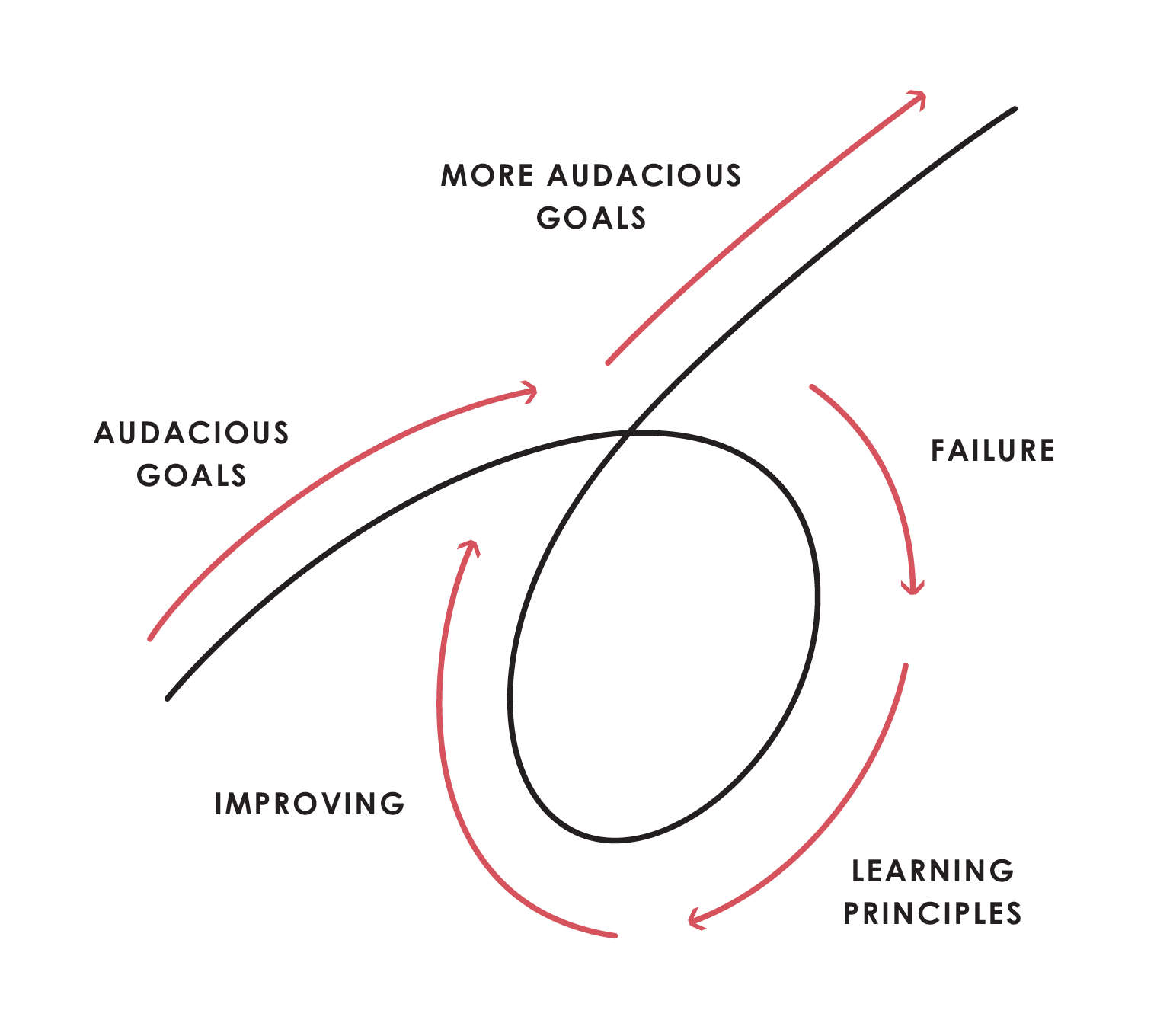
Mistakes can shift our perspective from "I know I'm right" to "How do I know I'm right?" Seeing things through the eyes of other smart people, allows us to see many more dimensions. Weighing people's inputs by their expertise increases the chance of being right.
Operating by principles: defining what went into making a decision, lays out the logic and creates a system to reflect and evaluate the process. Algorithms can let computers make decisions, which makes it clear that they can do it faster and without emotional bias. Continually testing, refining, evolving, and improving, allows us to systemize our decision making, resulting in higher quality decisions.
🚀 Where I'm Coming From
In the summer of 1971, Dalio had an experience that first sparked the justification of principles. President Nixon announced that the U.S. would go back on its promise to allow dollars to be exchanged for gold, the dollar plummeted. He expected the market to crash, but to his surprise the market rallied. By looking back, he learned this wasn't the first time a currency breaking its link to gold had sent the market soaring in response.
His assumption was wrong because he was surprised by something that hadn't happened in his lifetime, but had happened many times before. This realization was a valuable lesson. He started to see similar patterns in events and they became just "another one of those". The same actions leading to a similar outcome, the only difference was when they happened.
You better make sense of what happened to other people in other times and other places because if you don't you won't know if these things can happen to you and, if they do, you won't know how to deal with them.
He founded Bridgewater a few years later. In the early 1980's, as the economy began showing signs of cracking, Dalio publicly predicted a depression at least equal to The Great Depression. But instead, came the start of an 18 year long bull run. This nearly ruined the company. Reflecting on this, he saw the only way he could be successful would be to:
- Seek out the smartest people who disagreed with him so he could try to understand their reasoning.
- Know when not to have an opinion.
- Develop, test, and systemize timeless and universal principles.
- Balance risks in ways that keep the big upside while reducing the downside.
This new insight brought Bridgewater away from an autocracy — where one leads and others follow, away from a democracy — where all have equal vote, but to an idea meritocracy — where people’s opinions are weighted in proportion to their merits. This simple structure would transform Bridgewater into the largest Hedge Fund in the world.
Dalio attributes his success to his principles. He’s created investor value by navigating markets, bridging deals, and shaping policy around regulation. He admits he doesn’t know much compared to what he needs to know. But his principles have allowed him, his company, and his team to be more successful than he ever dreamed of, both professionally and personally.
🌎 Life Principles
By analyzing what affects you, you can understand the cause-effect relationships that drive them, and learn principles to deal with them.
1 Embrace Reality and Deal with It
There is nothing more important than understanding how reality works and how to deal with it. Think of life as if it were a game in which each problem you face is a puzzle to solve. Aligning your emotions and logic while solving puzzles, can lead to better decisions.
Be a hyperrealist. People who create great things aren’t idle dreamers, they are grounded in reality, able to choose their goals and achieve them. Decide what you value most, and what path you want to take to achieve it.
Dreams + Reality + Determination = A Successful Life
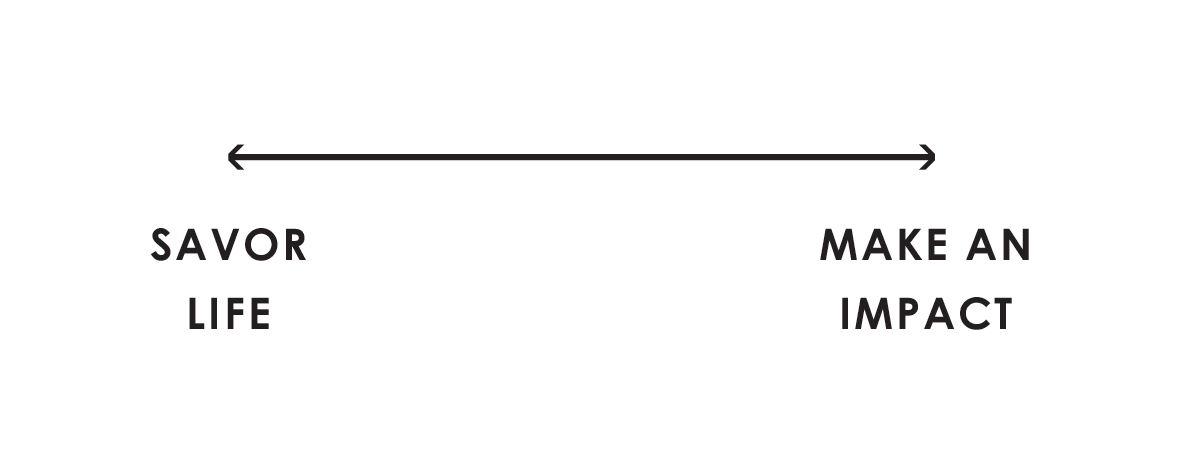
Truth — or, more precisely, an accurate understanding of reality — is the essential foundation for any good outcome. Allow yourself to see what’s true, even if it’s not what you want it to be.
Be radically open-minded and radically transparent. Having an open-mind can accelerate your learning, allowing you to make better decisions by continuously considering new information. The more honest you are, the more honest others will be, the truer and more meaningful your reality becomes.
Look to nature to learn how reality works. Nature governs the laws of our reality, which have been optimized for the whole, not the individual. It's smarter than us, and we should be analytical rather than emotional, and open to learning how things really work.

Understanding the rules will allow us to continually improve and evolve. Perfection doesn’t exist, it’s a goal that fuels a never-ending process of adaption. The key is to fail, learn, and improve quickly.

Evolving is life’s greatest accomplishment and its greatest reward. We are simultaneously everything to ourselves, and nothing to the universe. How we matter and evolve depends on what we feel connected to and to what extent we will put the interests of others above our own.
Understand nature’s practical lessons. Getting better at something gives us more long-term satisfaction than material things do. What we perceive as bad, is essential to the evolution process. Success is struggling and evolving as efficiently as possible. In order to gain strength, we must push our limits, which can be painful.
Pain + Reflection = Progress. If you’re not failing, you’re not pushing your limits, therefore, not maximizing your potential. Embracing short-term pain leads to long term comfort. Eventually, you will crash hard. The quality of your life will depend on the choices you make at those painful moments.
Weigh second- and third-order consequences. We often overweigh our decision making process by first-order consequences. Exercise is painful (1st) but it leads to better health (2nd) and a more attractive appearance (3rd). Make decisions based on long-term gain. Pain will enter the conversation regardless.
Own your outcomes. You will more likely find success and happiness if you take responsibility for your decisions well instead of complaining about things beyond your control. You can always make a situation better.
Look at the machine from the higher level. Higher level thinking gives you the ability to influence your life. Think of yourself as a machine, understand that by making modifications, you can influence an outcome. No one is great at everything, figure out what you can do and what should be outsourced. You can modify your machine to get virtually anything you want.
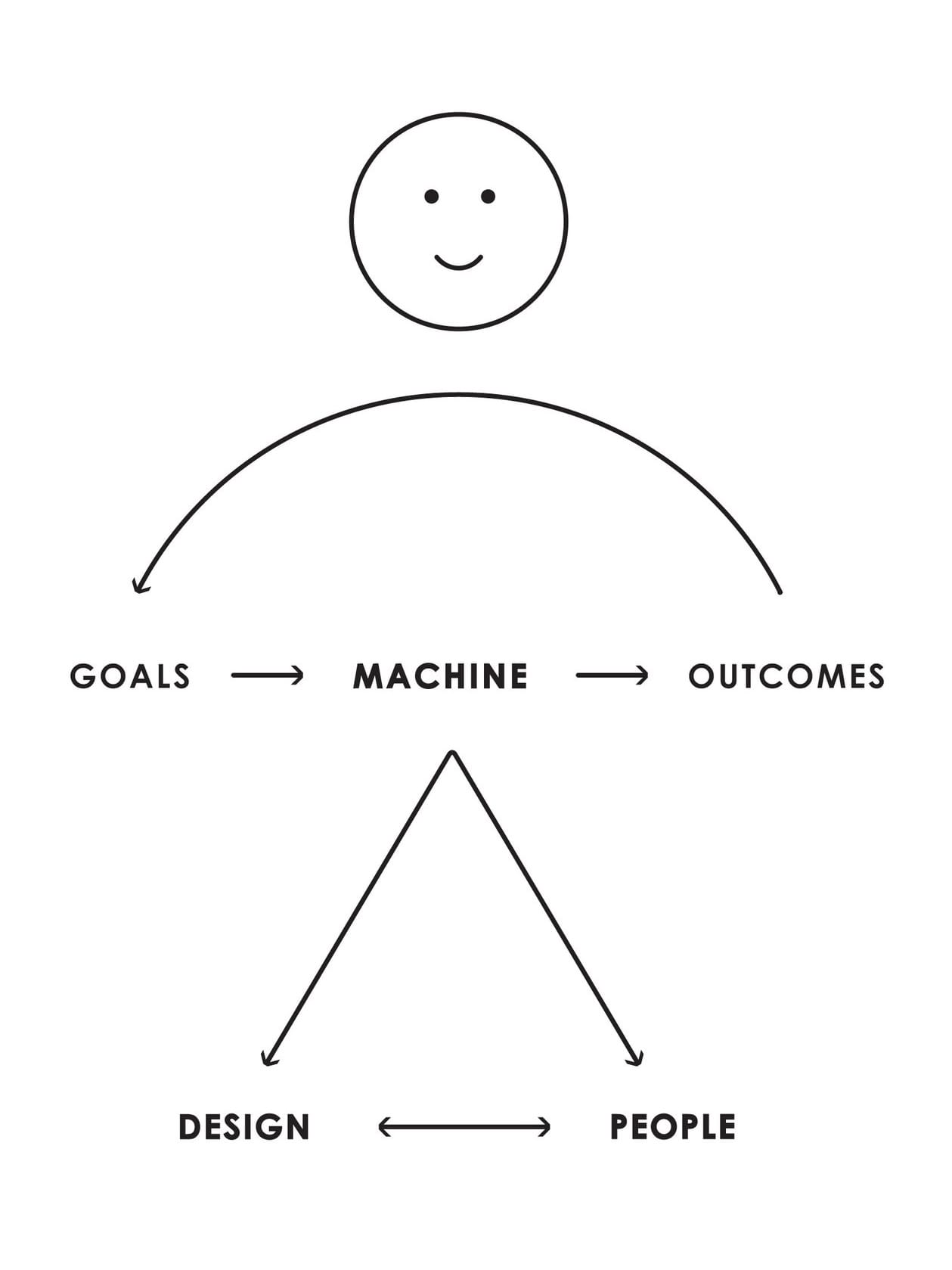
Most people lack the courage to confront their own weaknesses and make the hard choices required. Follow these steps:
- Don’t confuse what you wish were true with what is true.
- Don’t worry about looking good, worry about achieving your goals.
- Don’t overweight first-order consequences.
- Don’t let pain stand in the way of progress.
- Don’t blame bad outcomes on anyone else.
2 Use the 5-Step Process to Get What You Want Out of Life
The personal evolution process, takes place in five distinct steps. Doing each step thoroughly will provide you with the information you need to move on to the next step and do it well.
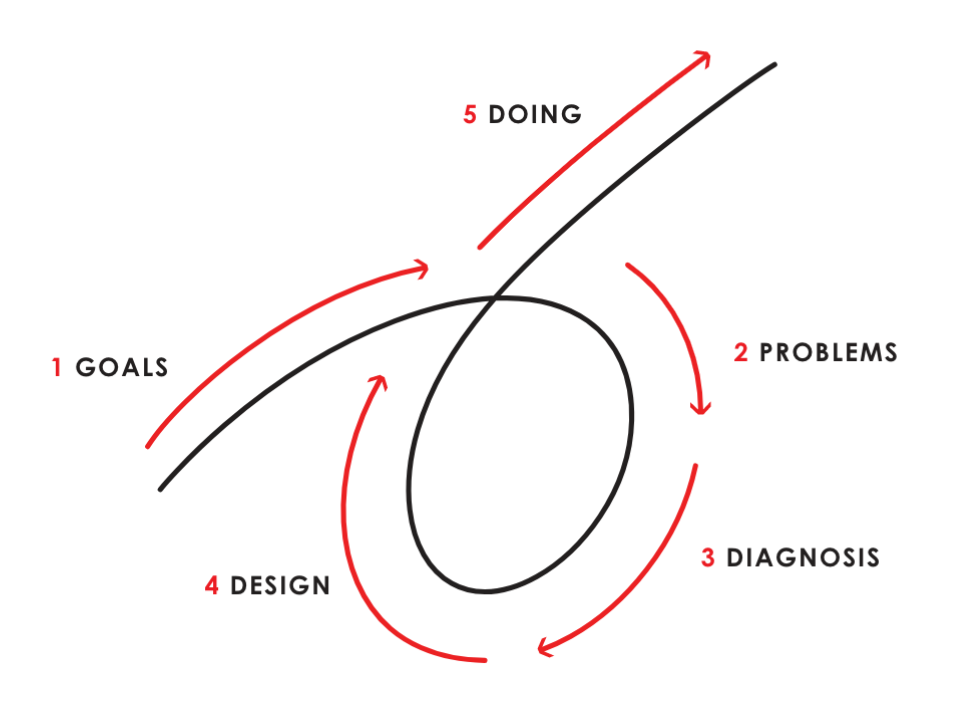
Have clear goals. While you can have virtually anything, you can’t have everything. Choosing goals means rejecting other things, it’s important to differentiate between goals (need to achieve) and desires (distractions). Don't limit your goals to what you know you can achieve. Flexibility and self-accountability will help you achieve your goals. Your mission is to make the best choices at the time, knowing you will be rewarded if you do.
Identify and don’t tolerate problems. Problems are opportunities. Thinking about a problem is less stressful than avoiding it. Acknowledging a weakness is the first step towards overcoming it. If a problem requires a unique skill: learn it, if it arises from an innate weakness: outsource it. Distinguish between big and small problems, focus your energy where you’ll get the biggest return. Don't mistake a cause of a problem with the real problem. Solve every problem along the way to success.
Diagnose problems to get at their root cause. Root problems manifest themselves over and over in seemingly different situations. You can only truly solve problems by removing their root cause, distinguishing the symptoms from the disease. Look at yourself and others objectively and understand the root causes standing in the way.
Design a plan. There are many paths to achieving a goal, you only need to find one. It doesn’t take a lot of time to plan, but it’s an often skipped step. Visualize what got you to where you are now, and what must be done in the future to reach your goals. Identify changes you can make to your machine in order to solve your problems, and who will play what roles along the way.
Push through to completion. Great plans go nowhere without execution. Keep your actions aligned with your goals by staying discipline, building good work habits, and establishing clear metrics to keep you accountable.
Remember that weaknesses don’t matter if you find solutions. Everyone has weaknesses, no one is good at everything. Identify what you struggle with and a solution to solve it. You could do this yourself, or find help from others. Have humility to get what you need from others.
Understand your own and others’ mental maps and humility. Everyone begins at the lower left corner. We have to actively want to improve, and put in the work to improve. Identify where you currently are, where you want to be, and how to bridge that gap.
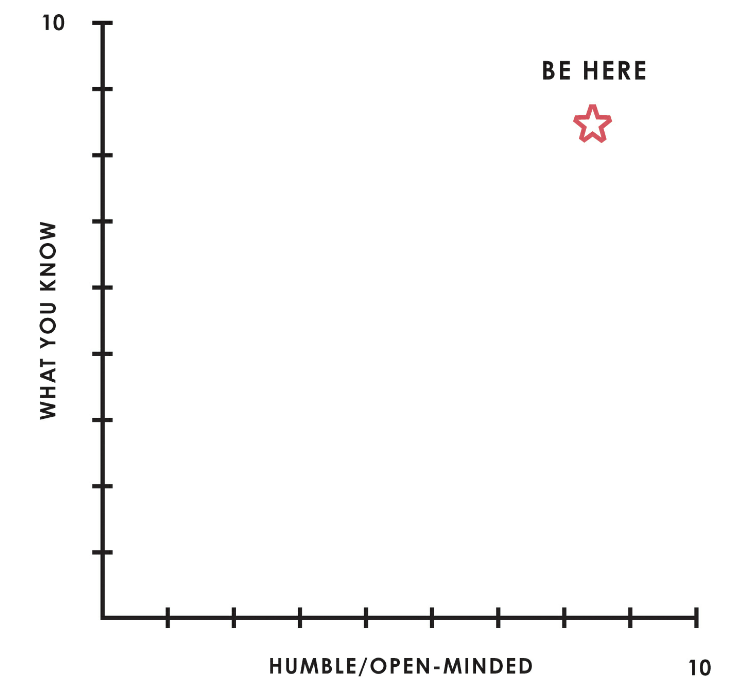
3 Be Radically Open-Minded
Barriers exist because of how our brains work, nearly everyone encounters them, but can get around them.
Recognize your two barriers. Your two biggest barriers to decision making are your ego and blind spots. Your need to be right can't be more important than your need to find what’s true. We see things in different ways, and can’t appreciate what we can’t see. Differences in thinking can be symbiotic and complementary, rather than disruptive. Ego and blind spots are fatal flaws that keep people from reaching their full potential.
Practice radically open-mindedness. Motivated by genuine worry that you might not see your choices optimally. Replacing a desire to always be right, with joy for learning what’s true. You need to be open to the possibility you might be wrong, so you can find what’s true. Asking smart people the right questions is more important than having all the answers. Making up your mind takes into consideration all possibilities, not just your own. When someone is more believable, assume the roles of teacher and student.
Appreciate the art of thoughtful disagreement. The goal isn’t to convince the other party that you’re right, but to find what’s true. Other perspectives can allow you to be open to new ideas. It’s much worse to make a decision based on a wrong opinion, then to first seek out the truth and make a decision based on a right opinion.
Triangulate your view with believable people who are willing to disagree. When topics are too complex to make a decision, turning to experts for help with a decision can significantly raise our chances of making the right one.
Recognize the signs of closed-mindedness and open-mindedness that you should watch out for. You’ll be able to sort out open from closed, and surround yourself with open-minded ones. You’ll be able to make better decisions more effectively, and learn along the way.
Understand how you can become radically open-minded. The life we live is the result of the habits we develop. Using pain points and reflection can lead us to a better understanding of our weaknesses. Practising open-mindedness, asking “How do I know I’m right?” builds habits that allow us to be right more often in the future. It might feel like it takes a long time, but it’s nothing over the course of a lifetime.

4 Understand That People Are Wired Very Differently
We all experience reality in different ways and any single way is essentially distorted. Organizing people to compliment their strengths and compensate for their weaknesses is key. If you want to know what's true and what to do about it, you must understand your own brain.
Understand the power that comes from knowing how you and others are wired. What the body is for physical differences, the brain is for mental differences. Our brains set the parameters of what we're able to do mentally. At the root of differences in opinion, is differences in how our brains work. Differences in our brains, creates strengths and weaknesses.
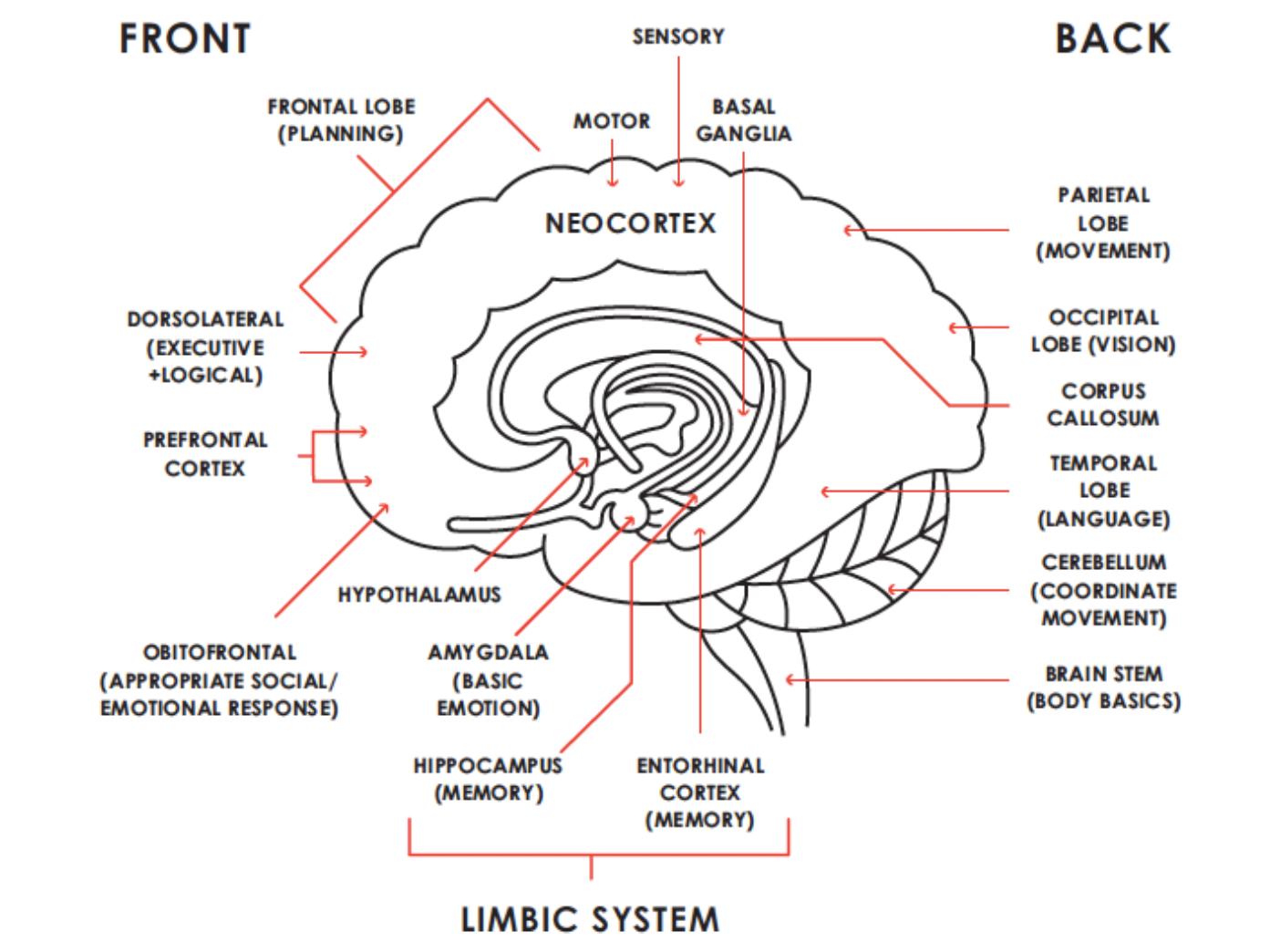
Meaningful work and meaningful relationships aren't just nice things we chose for ourselves – they are genetically programmed into us. We've been evolving for millions of years, what really sets us apart from other species is our social IQ. Our ability to work together. Every part of our day, is the result of activities from all over the world.
Understand the great brain battles and how to control them to get what "you" want. Be aware of your subconscious and consciously reflect on it. Turning off our conscious, turns on our subconscious, sparking creativity. Those who make personal evolution, reflect on their battle between feelings and rational thinking, and understand what triggers an amygdala hijacking. Use kindness and persistence to build habits to reinforce what you really want.
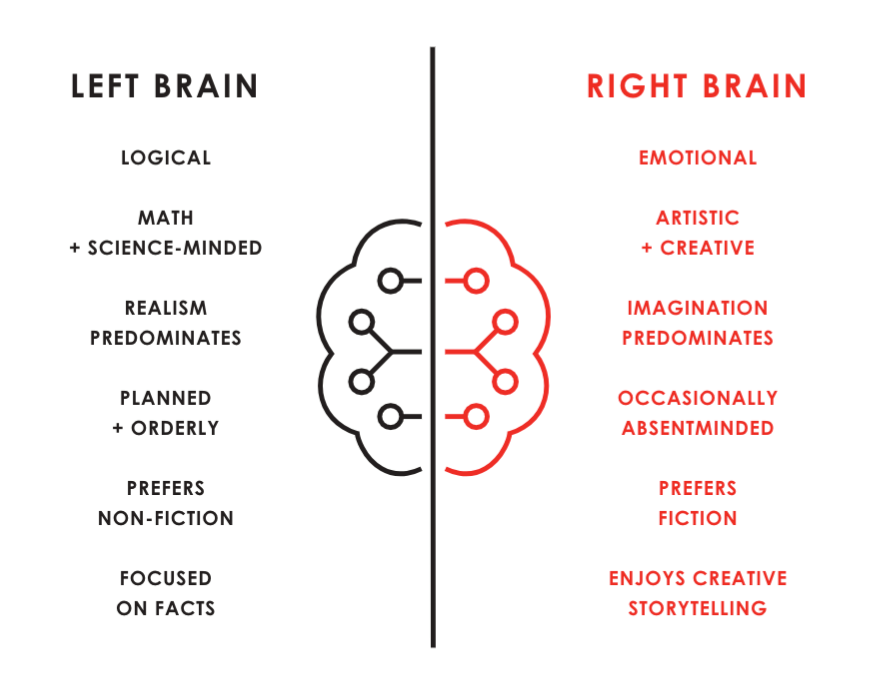
Both ways of thinking are invaluable. Our brains can change to an extent, through training and practice. But instead of expecting change, it's more effective to acknowledge one's weaknesses and create guardrails.
Find out what you and others are like. Everyone has strengths and weaknesses, and has an important role to play in life. Nature made everything and everyone for a purpose. The courage that's needed most isn't the kind that drives you to prevail over others, but the kind that allows you to be your truest self.
Getting the right people in the right roles in support of your goal is the key to succeeding at whatever you choose to accomplish. Be a conductor of an orchestra. Put the right people in the right place to be successful. Each person must perform at their best while working together, so the orchestra becomes more than the sum of its parts.
5 Learn How to Make Decisions Effectively
Most of the processes that go into everyday decision making are subconscious and more complex than we understand.
Recognize that 1) the biggest threat to good decision making is harmful emotions, and 2) decision making is a two-step process (first learning and then deciding). Unemotionally allow yourself to learn about a situation, is the essential first step. Learn and explore your options. The quality of your decision making will depend on the quality of your ability to learn well.
Synthesize the situation at hand. We are faced with an infinite number of things every day. We have to differentiate between what is important, and what is not. Then we know where to focus our attention.
Synthesize the situation through time. We can identify patterns by collecting information over time. Even if something is improving, it still needs to be improving at and towards an acceptable level.
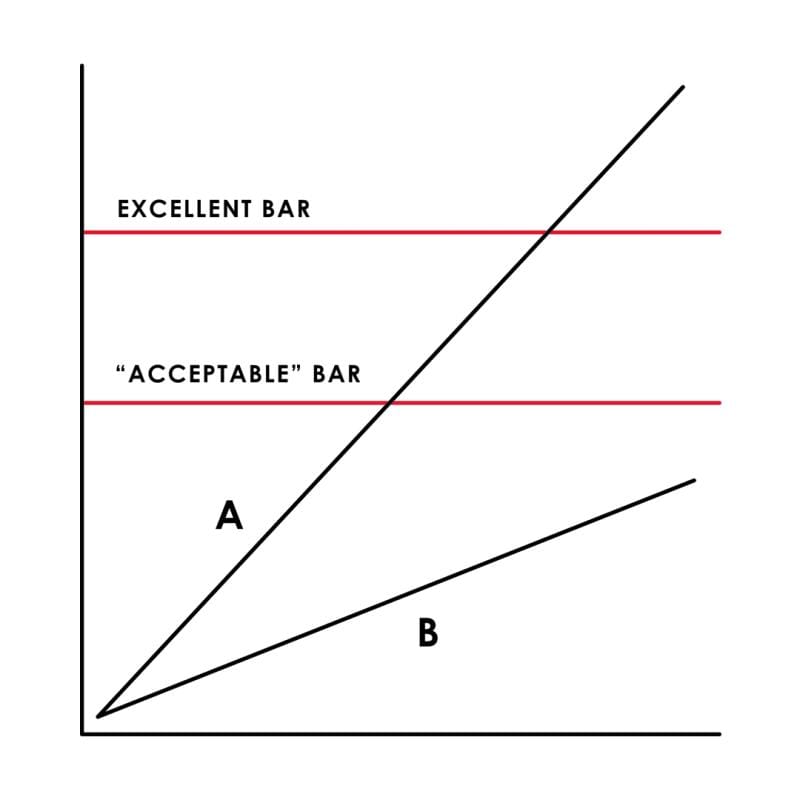
"By-and-large" is the level at which you need to understand most things to make effective decisions. The 80/20 Rule says that we get 80% of value with 20% of the information. The remaining 20% of value requires 80% of effort. Don't get bogged down in the detail, the important information will be in five to ten factors.
Navigate levels effectively. Reality exists at different levels, each gives us a valuable perspective. When making decisions and communicating, know what level you're on, and what information you need at that level. Have consistency throughout the different levels, ensuring that everything makes sense.
Logic, reason, and common sense are your best tools for synthesizing reality and understanding what to do about it. Decision making should be evidence-based and logical when working in groups, eliminating the chance that the loudest opinion will prevail.
Make your decisions as expected value calculations. You make calculated bets without thinking about it. Weighing the pros and cons, and making a decision. Improve your odds by collecting more information. Significantly improve your track record by only making bets you're confident will pay off.
Prioritize by weighing the value of additional information against the cost of not deciding. Evaluate the benefit of collecting more information against the cost of waiting to decide. Separate "must-do's" from "like-to-do's", don't get distracted from important tasks. Anything is possible, it's the probabilities that matter – everything should be weighted by its likelihood and prioritized.
Simplify! Get rid of irrelevant details so the essential things and the relationships between them stand out.
Use principles. Almost all "cases at hand" are just "another one of those," identifying which "one of those" it is. Applying well-thought-out principles for dealing with it, will allow you to reduce the number of decisions you have to make, leading you to make much better ones.
Believability weight your decision making. Don't overestimate your own believability, and distinguish between who is more or less credible. In disagreements, try to agree on what principles should be used to make a decision – if this is agreed on, you should arrive at a conclusion everyone agrees with. Believability enhances your decision making.
Convert your principles into algorithms and have the computer make decisions alongside you. Using computers to help make decisions can be powerful. Using predetermined rules, a computer can make timely, efficient, and unbiased decisions. Using our brain alongside technology is what elevates us.
Be cautious about trusting AI without having deep understanding. AI will only become more powerful, but is limited by their programs. If something hasn't happened before, where the cause-effect relationship is unknown, it's impossible to program it. AI can assist our decision making, and make decisions for us, but complex decisions require a human interpretation.
💼 Work Principles
For organizations to function well, its work principles must align with its members' life principles. Great organizations are machines consisting of two major parts: culture and people. You can't compromise the uncompromisable. That requires tough love, caring, high standards, and radical truth and transparency. The evolutionary process of an organization should be self-reinforcing.
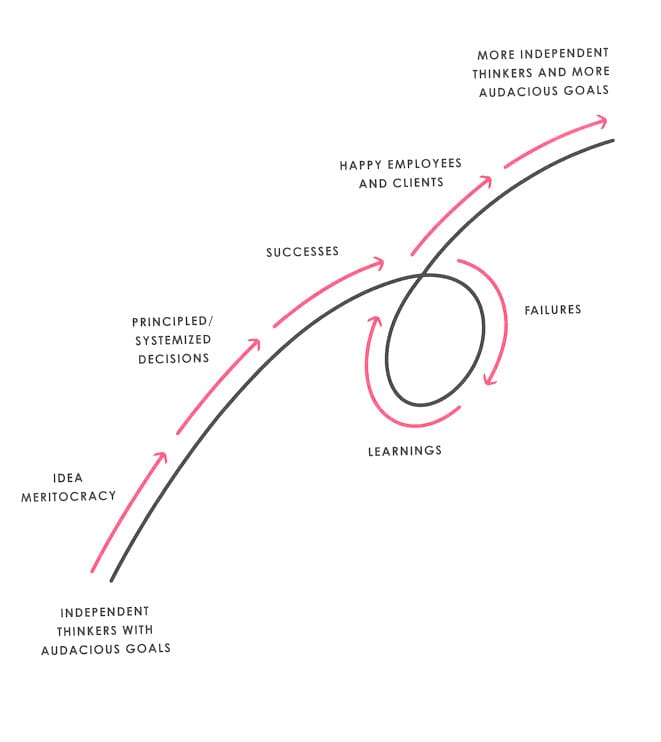
Make your passion and work one and the same and do it with people you want to be with. Work is either 1) a job you do to earn the money to pay for the life you want to have, or 2) what you do to achieve your mission, or some mix of the two. Make it as much of 2) as possible, recognizing the value of 1).
TO GET THE CULTURE RIGHT . . .
Working in a culture that suits you is fundamental to your happiness and effectiveness. It should also be one that produces great outcomes, keeping you engaged and motivated.
1 Trust in Radical Truth and Radical Transparency
The more people can see – the good, bad, and ugly – the more effective they are at deciding the appropriate ways of handling things. It's almost always better to shoot straight, even when you don't have all the answers or when there's bad news to convey.
Realize that you have nothing to fear from knowing the truth. Knowing is less scary than not knowing. Knowing allows you to act on the truth, not knowing keeps you distracted from the overall mission.
Have integrity and demand it from others. People who are one way on the inside and another on the outside become conflicted and lose touch with their own values. Thinking solely about what's accurate instead of how it's perceived pushes you to focus on the most important things. When mistakes and weaknesses are hidden, unhealthy character is rewarded.
Create an environment in which everyone has the right to understand what makes sense and no one has the right to hold a critical opinion without speaking up. In an idea meritocracy, openness is a responsibility. Discuss until everyone understands, and everyone is understood. Don't tolerate dishonesty, but treat it practically.
Be radically transparent. Exceptions should be very rare and contained to private, personal, or critical business tasks. Transparency shouldn't bring issues into light, it should remove issues altogether. Transparency should help bring the organization to a higher standard.
Meaningful relationships and meaningful work are mutually reinforcing, especially when supported by radical truth and radical transparency. This self-reinforcing cycle creates the success that allows you to pursue more and more ambitious goals.
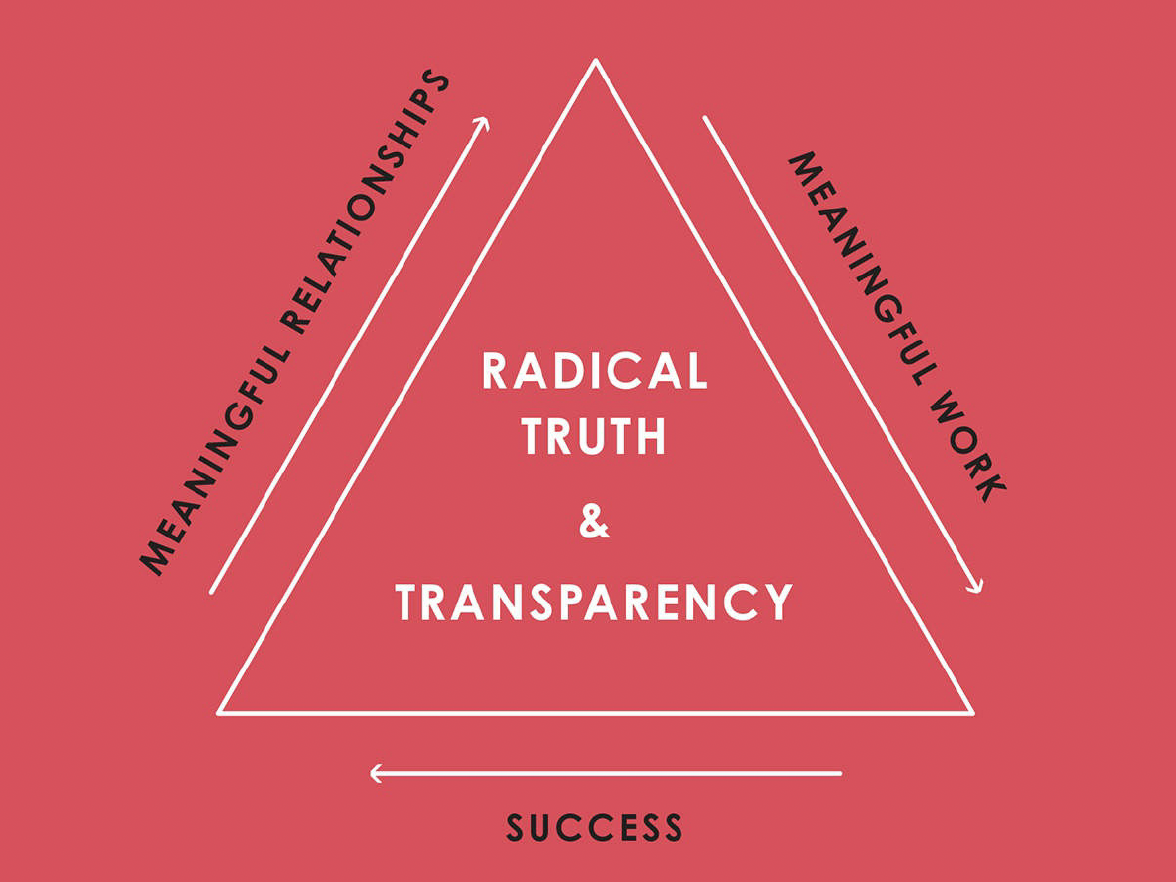
2 Cultivate Meaningful Work and Meaningful Relationships
Meaningful relationships create trust and support that people need to push each other to do great things, they are invaluable for building and sustaining a culture of excellence.
Be loyal to the common mission and not to anyone who is not operating consistently with it. Loyalty not in sync with the mission can undermine the well-being of the community. Organization interests should be above personal interests.
Be crystal clear on what the deal is. Expectations, for employees and employers, is important for alignment. Special circumstances will call for exceptions, but there's a difference between generosity and entitlement.
Recognize that the size of the organization can pose a threat to meaningful relationships. Grouping people together by a common mission is the best way to scale meaningful relationships, instead of becoming impersonal as the organization grows.
Remember that most people will pretend to operate in your interest while operating in their own. Strive for the highest percentage of your population having meaningful work and relationships, while recognizing that there will always be some who won't.
Treasure honourable people who are capable and will treat you well even when you're not looking. They are rare. Such relationships take time to build and can only be built if you treat such people well.
3 Create a Culture in Which It Is Okay to Make Mistakes and Unacceptable Not to Learn from Them
Successful people learn from mistakes and unsuccessful people don't. Looking back on yourself a year ago, if you aren't shocked by how stupid you were, you probably haven't learned much. Those who embrace their mistakes substantially outperform their peers who have the same abilities but bigger ego barriers.
Recognize that mistakes are a natural part of the evolutionary process. Failing means pushing yourself outside of your comfort zone. Failing well means learning from your mistakes, seeing them as an opportunity to improve.
Don't worry about looking good – worry about achieving your goals. Reflect and remind yourself that accurate criticism is the most valuable feedback you can receive. Fix it and move on.
Observe the patterns of mistakes to see if they are products of weakness. The path to success starts with knowing what your weaknesses are. Write them down and connect the dots to your "one big challenge". The first step to tackling impediments is getting them into the open.
Remember to reflect when you experience pain. Confronting pain will allow you to see the paradoxes and problems you face, reflecting on them gives you wisdom. The worst mistake you can make, is not facing your mistakes.
Know what types of mistakes are acceptable and what types are unacceptable, and don't allow the people who work for you to make the unacceptable ones. Weigh the potential damage of a mistake against the benefit of incremental learning, "I'm willing to scratch the car, not total it."
4 Get and Stay in Sync
Attain alignment consciously, continually, and systematically. Thoughtful disagreement isn't a way to convince someone you're right, it's a way to find what's true and what to do about it.
Recognize that conflicts are essential for great relationships because they are how people determine whether their principles are aligned and resolve their differences. Open discussion ensures there's no misunderstandings.
Know how to get in sync and disagree well. When people in disagreements are willing to learn from each other, their evolution is faster and their decision making is better. It's never acceptable to get upset if the process doesn't produce the decision that you personally wanted. Wisdom is seeing both sides and weighing them appropriately.
Be open-minded and assertive at the same time. You need to see things through other's eyes, while being clear on how things look through your eyes. Ask questions, it's okay not to know, but not okay to stay that way. Seek others who ask questions to learn and be open-minded.
If it is your meeting to run, manage the conversation. Ensure meetings are valuable, they should stay on topic. Communicate clearly, avoid confusion, navigate levels of the conversation, be open-minded and encourage others to do the same. Everyone in the meeting should understand what's covered, in an efficient and considerate way.
Great collaboration feels like playing jazz. Two people who collaborate well will be about three times more effective than operating independently. They catch what the other misses, leverage each other's strengths, and hold each other accountable to higher standards. Too large of a group will actually subtract from the effectiveness, even if they are all smart people.
When you have alignment, cherish it. When you find people who share your most important values and the ways you choose to live them, make sure you end up with them.
If you find you can't reconcile major differences – especially in values – consider whether the relationship is worth preserving. A lack of common values will lead to a lot of pain and other harmful consequences and may ultimately drive you apart.
5 Believability Weight Your Decision Making
Look down at yourself and your team when a decision needs to be made and consider who is most likely to be right.
Recognize that having an effective idea meritocracy requires that you understand the merit of each person's ideas. Understand why something is true, rather than just accept it as true. Don't tell other's how something should be done, if you can't successfully do that thing. Everyone has opinions, and often they are wrong, including our own.
Find the most believable people possible who disagree with you and try to understand their reasoning. Different perspectives is the quickest way to get an education and increase your chance of being right. Look to those who have been successful and have great explanations of the cause-effect relationship – reasoning that lead to a conclusion is more important than the conclusion. Seek logic and avoid narrow thinking.
Think about whether you are playing the role of a teacher, a student, or a peer and whether you should be teaching, asking questions, or debating. If you are less believable, be a student and ask questions. If you're more believable, convey your understanding and answer questions. The mission is to understand what's true. All parties should be willing to change their mind based on logic and evidence.
Understand how people came by their opinions. Our brains work like computers, they process data according to our wiring. Anyone can give you an answer, make sure you're asking the right people the right questions, and that when you're asked a question, you're the right person to provide an opinion. An answer from a non-believable person is worse than no answer.
Disagreeing must be done efficiently. Know when to agree to move on – it's more important to do the big things well than to do the small things perfectly. Believably-weighted decision making is meant to challenge ideas, not overrule them. Choose a handful of people who share your deepest values to quickly believably-weigh decisions. If your opinion goes against the crowd, don't be bias.
Recognize that everyone has the right and responsibility to try to make sense of important things. Be patient, stay open-minded, ask questions, and explain things as simply as possible. Getting and staying in sync can be difficult, but in the long run it's much better for everyone.
Pay more attention to whether the decision-making system is fair than whether you get your way. The idea meritocracy is more important than the happiness of any one of its members, even if that member is you.
6 Recognize How to Get Beyond Disagreements
You can't just encourage people to think independently and fight for the truth, you have to provide a path to get past their disagreements and move forward.
Remember: Principles can't be ignored by mutual agreement. It's everyone's obligation to speak up, own it, or get out, regarding principles. If you believe there's a problem with one, speak up to change it. The same standards of behaviour apply to everyone.
Make sure people don't confused the right to complain, give advice, and openly debate with the right to make decisions. Responsibilities are assigned to people based on their ability to handle them. Stress-testing decisions, are meant to improve the quality by offering alternative perspectives. It doesn't transfer the responsibility of making those decisions.
Don't leave important conflicts unresolved. Conflicts should be resolved through seeking the important, accurate conclusions. Don't let the little unimportant details divide you from the big important mission. If a decision can't be made, escalate it to a responsible person to make a believability-weighted vote.
Once a decision is made, everyone should get behind it even though individuals may still disagree. Groups that work together have to operate with protocols that allow for disagreements to be explored, while recognizing that group cohesion supersedes individual desires once a decision is made. Individuals don't have the right to render verdicts, or threaten the system.
Remember that if the idea meritocracy comes into conflict with the well-being of the organization, it will inevitably suffer. What's good must work well, and having an organization work well is of paramount importance. In very rare occasions, going against set principles for the well being of an organization may be required.
Recognize that if the people who have the power don't want to operate by principles, the principled way of operating with fail. The power supporting principles must be given to people who value the principled way of operating more than their individual interests.
TO GET THE PEOPLE RIGHT . . .
A culture and its people are symbiotic – culture attracts certain people and they either reinforce or evolve the culture based on their values and what they're like.
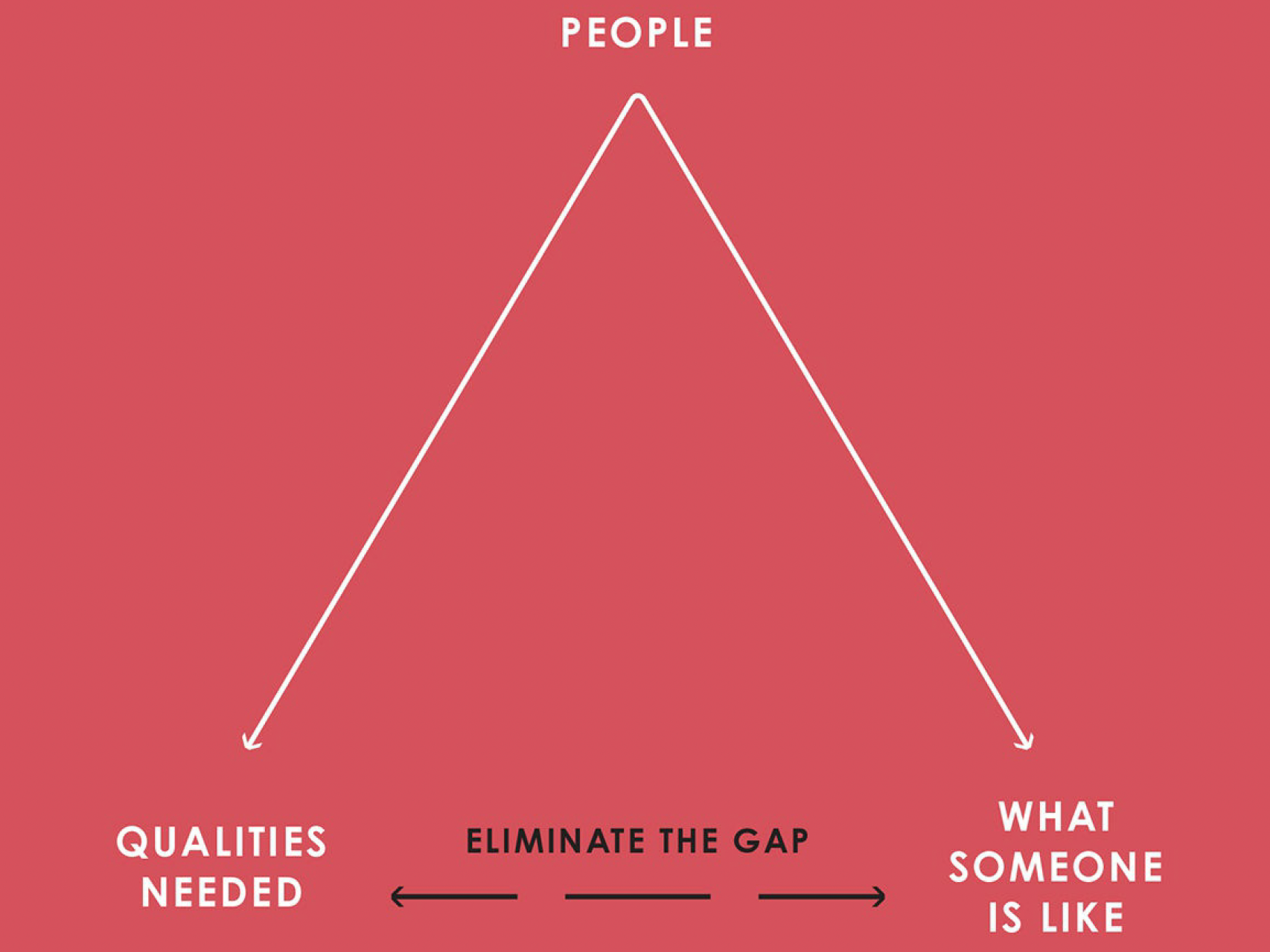
7 Remember That the WHO Is More Important than the WHAT
People often make the mistake of focusing on what should be done, instead of the more important question of who should determine what should be done. It's much easier to visualize how things will go when you have the right person.
Recognize that the most important decision for you to make is who you choose as your Responsible Parties. Appoint RPs who are responsible, believable in their tasks, and are able to achieve the goals they are given. Only take on tasks that you yourself are competent in, and remember that we all have our incompetencies.
Know that the ultimate Responsibility Party will be the person who bears the consequences of what is done. Take responsibility for your actions, including your decisions that lead to an undesirable outcome. Everyone should be accountable, and have someone keeping them so.
Remember the force behind the thing. We tend to personify organizations, but that's misguided because companies don't make decisions, people do.
8 Hire Right, Because the Penalties for Hiring Wrong Are Huge
Hiring the right people comes down to an internal process of determining which problem they're trying to solve. Poor hiring, usually means poor internal process.
Match the person to the design. Design based on what's required, don't settle because of someone's ability. In picking people: values are most important, abilities next, and skills last. Skills can be learned, values are deeply imbedded. Be systematic and evidence-based with hiring, look for people who shine.
Remember that people are built very differently and that different ways of seeing and thinking make people suitable for different jobs. People can assume roles outside of their comfort zone, but they typically don't change much. Some people will naturally fit into roles. Hire unbiasedly to how you think, conduct a personality assessment, and consider someone's ability to look at themselves objectively.
Think of your teams the way that sports managers do: No one person possesses everything required to produce success, yet everyone must excel. When teams operate with high standards and shared values, extraordinary relationships are likely to develop.
Pay attention to people's track records. People's personalities are well formed before they come to you. You have to find out if they have a track record of excellence. School performance won't tell you much about what you want. Past success doesn't guarantee future success, but there's a lot you can do to help them be successful.
Don't hire people just to fit the first job they will do; hire people you want to share your life with. Companies evolve in ways you can't anticipate, so hire people you want to share a long-term mission with. Look for people who ask good questions, it's a better indicator of future success than great answers.
When considering compensation, provide both stability and opportunity. Provide enough to eliminate financial stress, but not enough to encourage complacency. Instead of focusing on how to slice the pie, focus on making the pie bigger.
Remember that in great partnerships, consideration and generosity are more important than money. Someone without much can be more generous giving a little, than a rich person giving a lot. Be generous and expect generosity from others.
Great people are hard to find so make sure you think about how to keep them. Encourage people to speak up about how things are going for them. Close advice from an active mentor should last at least one year.
9 Constantly Train, Test, Evaluate, and Sort People
Both your people and your design must evolve for your machine to improve. The faster they evolve, the faster your outcomes will improve.
Understand that you and the people you manage will go through a process of personal evolution. This process is about finding out someone's likes and dislikes, and their strengths and weaknesses. Egos must be suspended in order to discover these things. Teach your people how to fish. It's okay to make mistakes on the path of learning, doing things first hand is the best way to learn.
Provide constant feedback. Feedback should reflect what's succeeding and what isn't in proportion to the actual situation. People should understand where they stack up to the expectations.
Evaluate accurately, not kindly. Kind but not accurate can be harmful to the person and the organization. Put compliments and criticisms in perspective to ensure they're understood as intended. Make accurate assessments by speaking frankly, listening with an open mind, considering all views, and getting in sync with what's going on. Lead from both successes and failures.
Recognize that tough love is both the hardest and the most important type of love to give (because it's so rarely welcomed). In the long run, having to struggle to get what you want, rather than getting what you want easily, makes you stronger and shows you how to earn success. Criticism makes us work on what we need to improve, which is valuable.
Don't hide your observations about people. The goal should be to figure out how you and your people are built, in order to help them be successful. Use evidence-based data to provide insight, but look big picture – don't over squeeze any single piece of information.
Make the process of learning what someone is like open, evolutionary, and iterative. Assess a person's values, abilities and skills, share it and listen to feedback. This exercise will crystallize suitable rolls. To build your perpetual motion machine, have clear rules and metrics. Evaluations should be objective from the big picture perspective. The two biggest mistakes you can make in an assessment is: overconfidence and failing to get in sync.
Knowing how people operate and being able to judge whether that way of operating will lead to good results is more important than knowing what they did. Assess the logic and reasoning that went into something, along with the outcome. Bad reasoning can lead to good outcomes, but most often, good reasoning leads to good outcomes.
Recognize that when you are really in sync with someone about their weaknesses, the weaknesses are probably true. Evaluation is continuous, document the journey to see progress. Look for "by-and-large", don't waste time of details. Evaluate employees with the same rigour as job candidates.
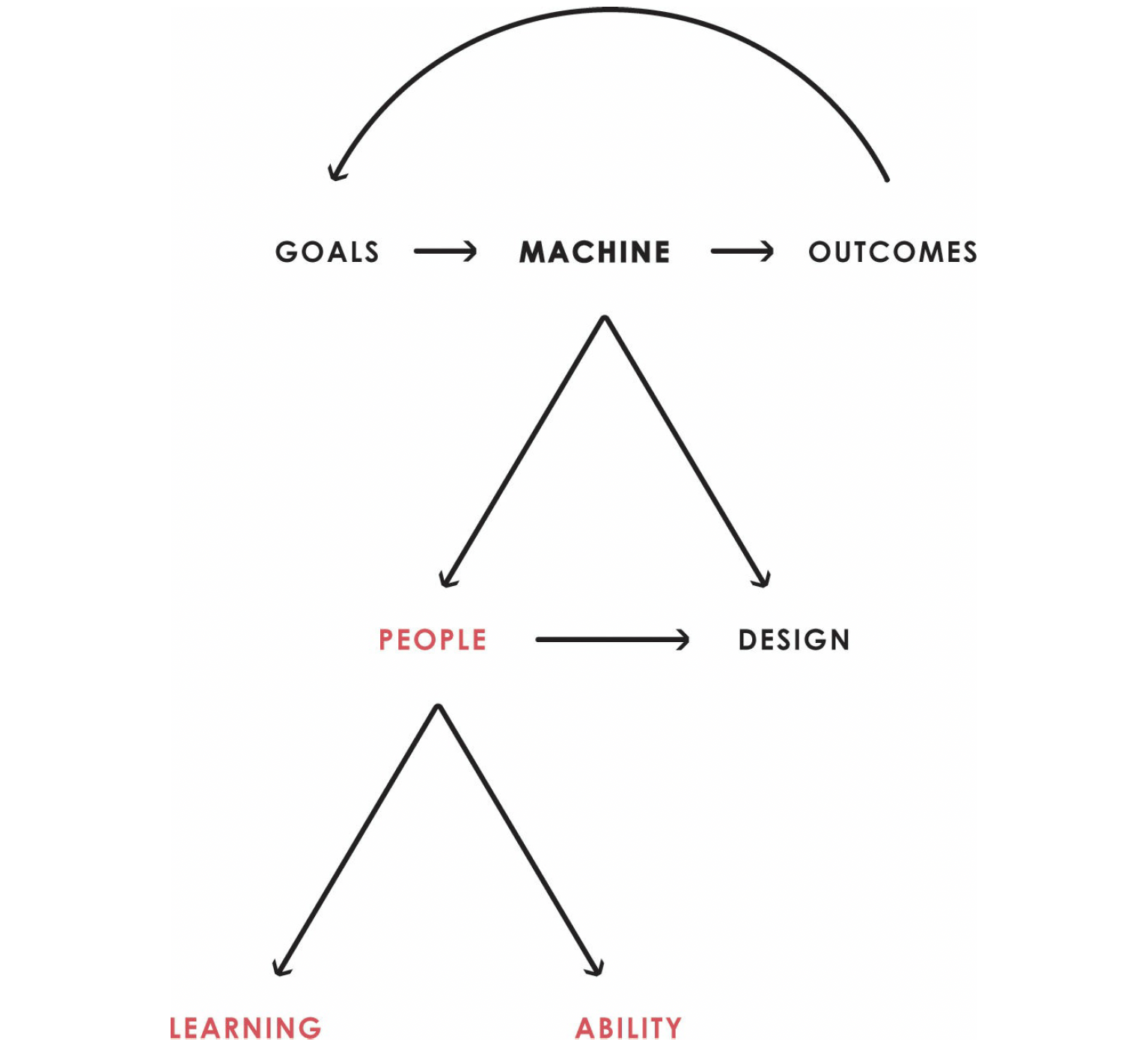
Train, guardrail, or remove people; don't rehabilitate them. Training is a planned development to help someone evolve, rehabilitation is an attempt to significantly change someone's values and/or abilities. Training should be easy, rehabilitation is hard. Make decisions with the organizations best interest at heart.
Remember that the goal of a transfer is the best, highest use of the person in a way that benefits the community as a whole. Everyone should be on the same page and in agreeance over the transfer. Allow people to "complete their swings" before moving onto new roles, this can give you key insight to allow you to make a complete decision on what's best next.
Don't lower the bar. You can't compromise on the fundamentals of your organizations culture. If a person doesn't meet the standard set within an acceptable timeframe, it might be best to move on.
TO BUILD AND EVOLVE YOUR MACHINE . . .
A higher-level perspective allows you to see yourself and others objectively as a machine, understanding who can and can't do what well, and how everyone fits together to produce the best outcomes.

10 Manage as Someone Operating a Machine to Achieve a Goal
No matter what you do, at a high level you're setting goals and building machines to achieve them. No matter how good your design, there'll be problems. Your machine should be constantly evolving.
Look down on your machine and yourself within it from the higher level. You must be simultaneously trying to accomplish your goal and evaluating your machine. Building great metrics can give you everything you need to make an assessment, but remember not to focus on any single point of data. Never ignore your machine, but expect the unexpected to happen.
Remember that for every case you deal with, your approach should have two purposes: 1) to move you closer to your goal, and 2) to train and test your machine (i.e., your people and your design). Everything is a case study, assign principles to make it "another one of those", what you do should reflect the principles you have. When a problem occurs, look at it from: 1) the machine level, and 2) the case-at-hand level.
Understand the differences between managing, micromanaging, and not managing. Great managers orchestrate rather than do, micromanaging turns quickly into doing someone's job for them, and not managing has people doing their jobs without oversight and leadership.
Know what your people are like and what makes them tick, because your people are your most important resource. Knowing them in detail tells you what they like, what they can do, how much responsibility to give them, and how they should be trained. As people change, their profile changes, check in regularly and don't make assumptions.
Clearly assign responsibilities. Eliminate confusion about expectations and ensure people take failure towards completing their work goals, as personal failures. Remember who has what responsibilities, and reassess responsibilities as things change.
Probe deep and hard to learn what you can expect from your machine. Have your finger on the pulse of your machine, understand who does what and how. This puts you in a position of being proactive rather than reactive, because you see it all working and can see potential problems before they start. Have transparency across the levels. There are many ways to do something correctly.
Think like an owner, and expect the people you work with to do the same. When people recognize their own well-being is directly connected to that of their community, the ownership relationship becomes reciprocal. Delegate well, and force yourself and others to do difficult things.
Recognize and deal with key-man risk. Every key person should have at least one person who can replace them.
Don't treat everyone the same – treat them appropriately. To treat people appropriately, you have to treat them differently. Treat everyone according to the same set of rules. Care about the people you work with, and show them.
Know that great leadership is generally not what it's made out to be. The most effective leaders work to 1) open-mindedly seek out the best answers and 2) bring others along as part of that discovery process. That's how learning and getting in sync occurs. A great leader can be uncertain but prepared to deal with that uncertainty.
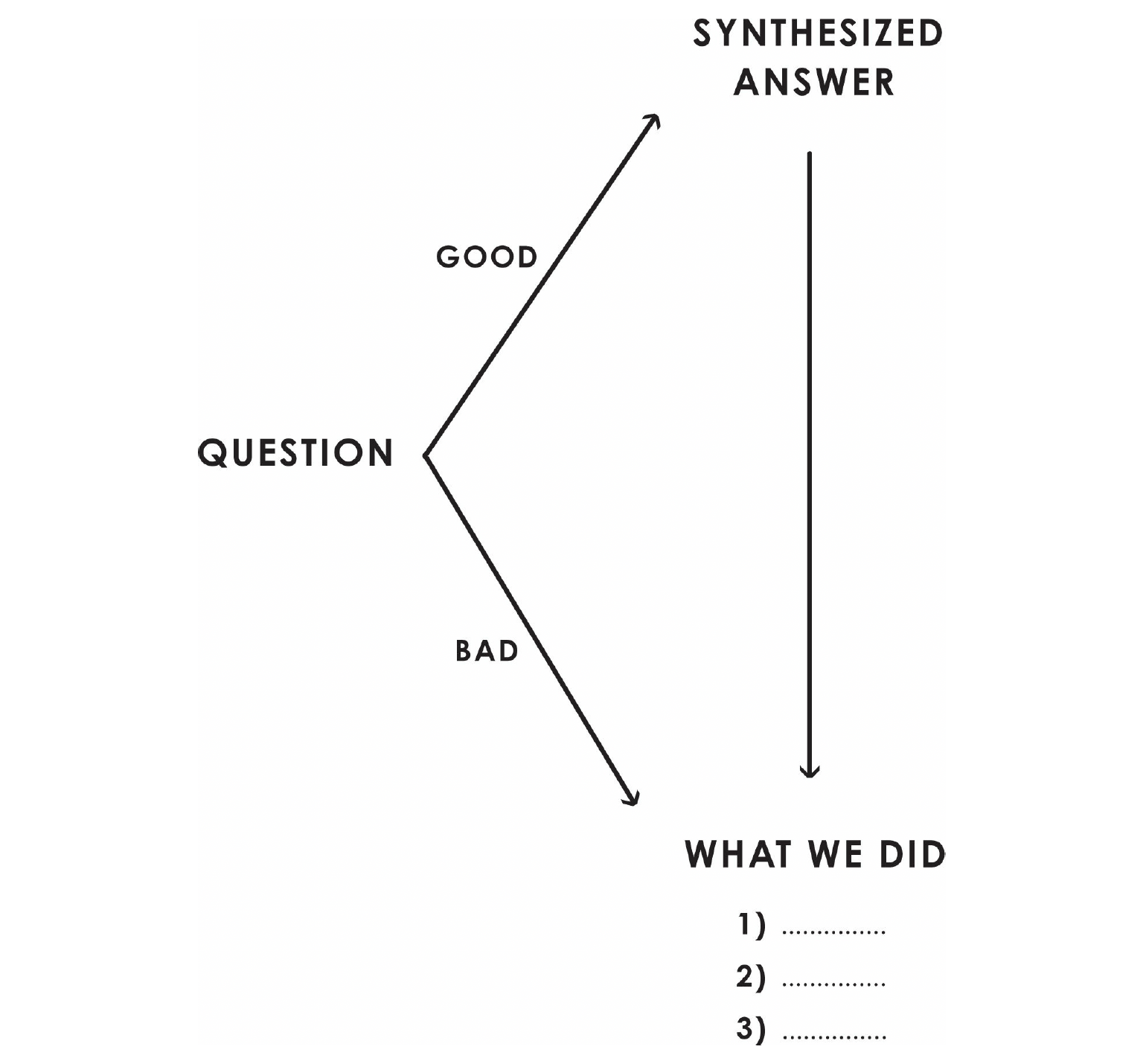
Hold yourself and your people accountable and appreciate them for holding you accountable. Ensure things go how they're supposed to, unless it's been agreed for them to go differently. People should understand and be up to the tasks they've been given. Don't confuse goals and tasks, and focus on what you should, rather than what you shouldn't.
Communicate the plan clearly and have clear metrics conveying whether you are progressing according to it. Looking back on how a plan has worked (or not), can signal how much confidence you should have in it moving forward. Make sure everyone understands the plan, is committed to it, and you've established clear metrics to track progress.
Escalate when you can't adequately handle your responsibilities and make sure that the people who work for you are proactive about doing the same. Escalation shouldn't be seen as a failure, but as a responsibility. Ensuring the goal is achieved is more important than who does what.
11 Perceive and Don't Tolerate Problems
Problems are like coal thrown into a locomotive engine, burning them up propels us forward. Every problem is an opportunity to improve your machine.
If you're not worried, you need to worry – and if you're worried, you don't need to worry. Worrying about what can go wrong will protect you from those things going wrong.
Design and oversee a machine to perceive whether things are good enough or not good enough, or do it yourself. Assign people the job of perceiving problems, ensuring they don't get used to unacceptable problems accumulating over time. If you see a problem where others don't, don't assume it isn't a problem. Compare how outcomes are lining up with goals, improvement should be within a range, and look like this:
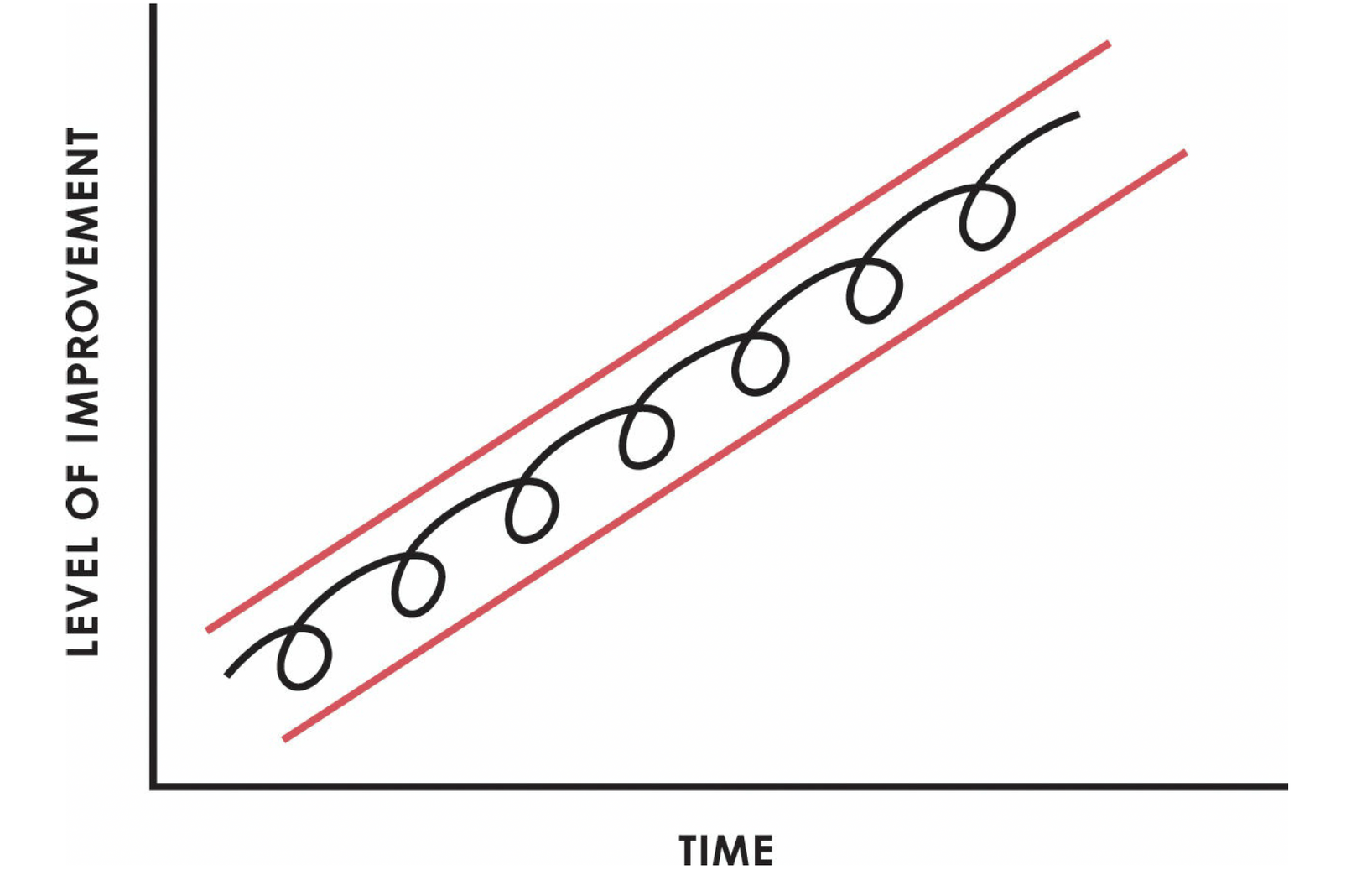
Not this:
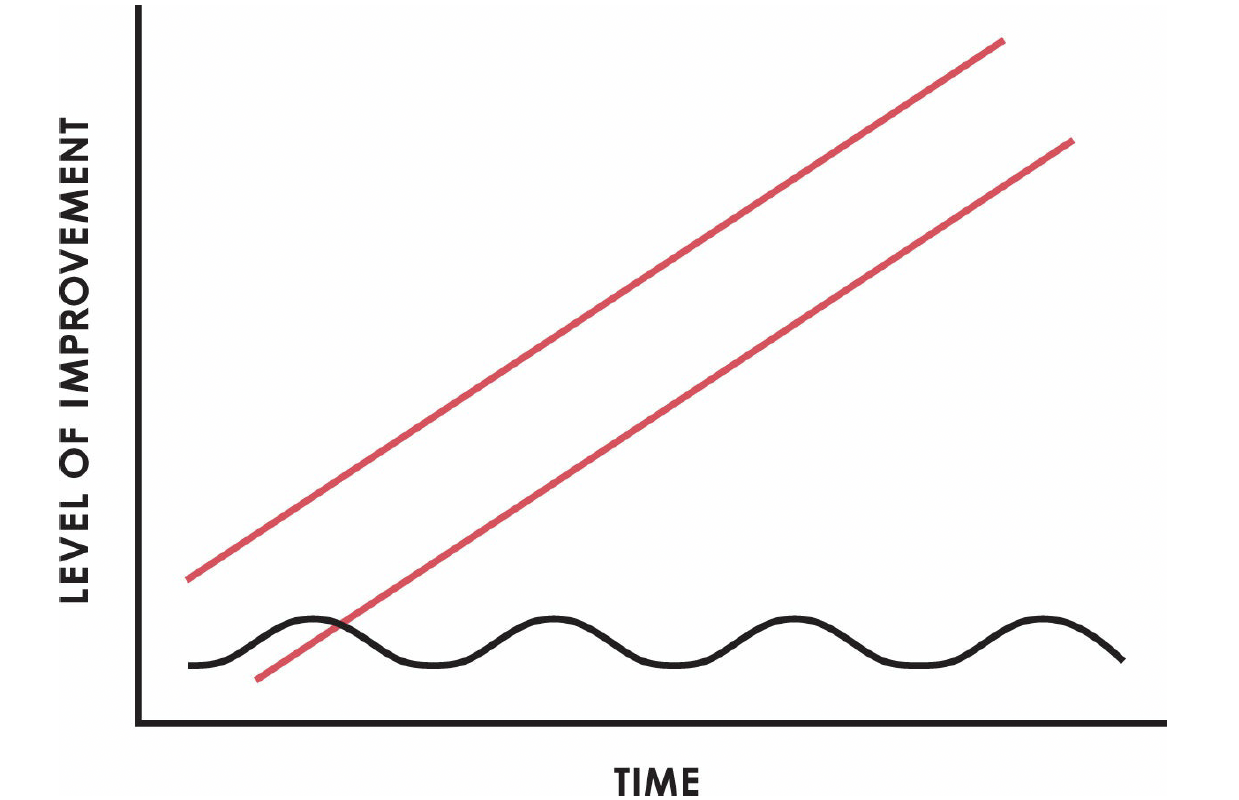
Be very specific about problems; don't start with generalizations. So people are required to take personal responsibility when things don't go right.
Don't be afraid to fix the difficult things. Fixing problems is a lot easier than not fixing them. Having principles to help solve problems, makes that process easier and more effective. Think of solving problems in a machine like way: note the problem, decide who will deal with it, and when.
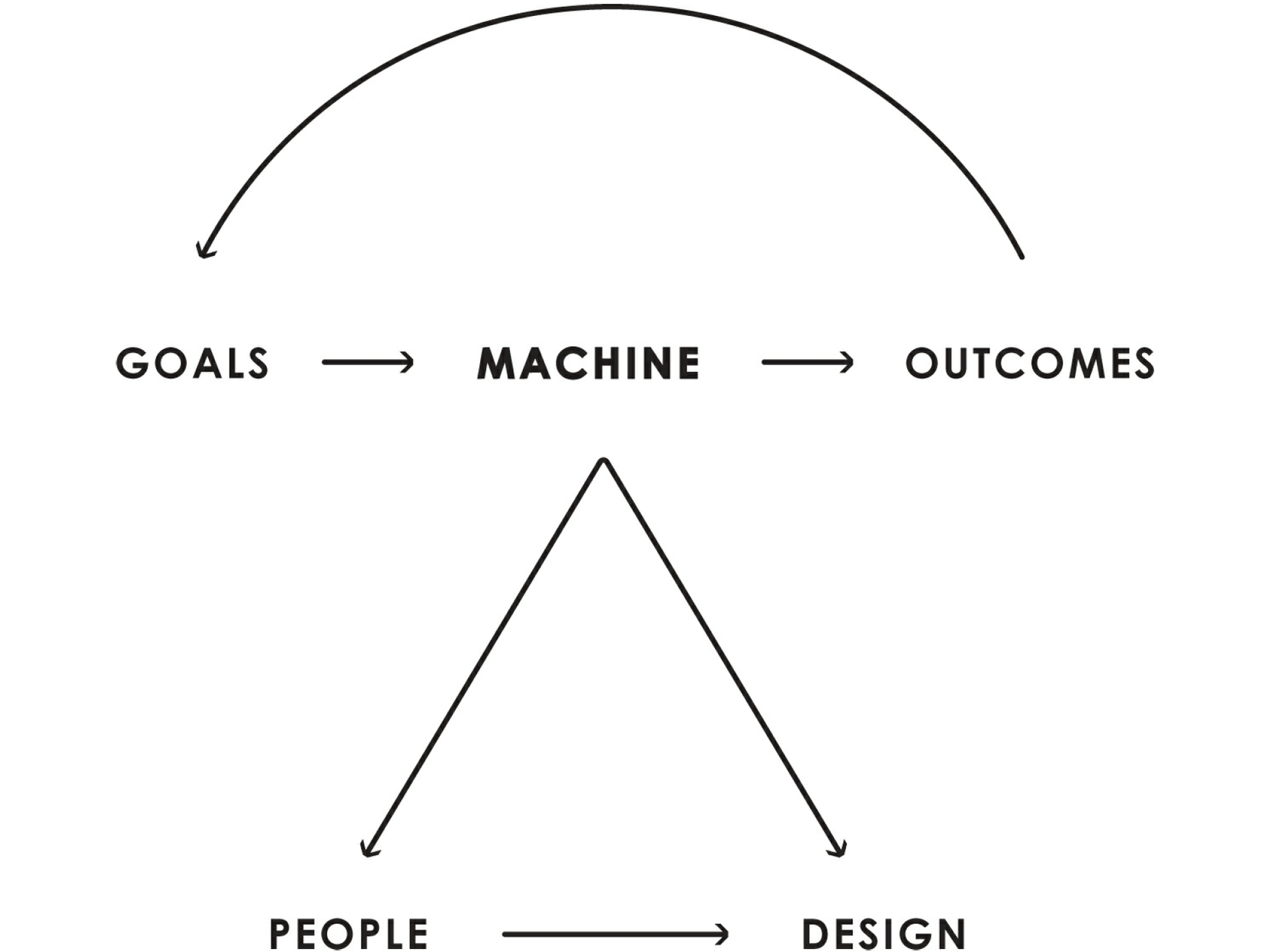
12 Diagnose Problems to Get at Their Root Causes
Identify the root causes of problems to see if the people or the design caused the problem. Getting to the root cause will stop the problem from reoccurring.
To diagnose well, ask the following questions: 1. Is the outcome good or bad? 2. Who is responsible for the outcome? 3. If the outcome is bad, is the Responsible Party incapable and/or is the design bad? Keep those questions in mind, anchor back to them, and you should do well. Answer each question in before moving onto the next. Your diagnosis will raise many more questions in the process, each question should be answered.
Maintain an emerging synthesis by diagnosing continuously. Look at significant problems as they occur so you can better understand them and connect their dots: why they occurred, are they changing – for the better or worse?
Keep in mind that diagnoses should product outcomes. At worst, it should lead to a theory of why it happened. At best, it should lead directly to a solution. Mix things up, don't fall into the trap of doing the same thing over and over.
Use the following "drill-down" technique to gain an 80/20 understanding of a department or sub-department that is having problems. 1) list the problems, 2) identify the root causes, 3) create a plan, 4) execute the plan.
Understand that diagnosis is foundational to both progress and quality relationships. You will find better solutions, while getting to know your team better. It's an opportunity for assessment and growth.
13 Design Improvements to Your Machine to Get Around Your Problems
Designs need to be based on deep and accurate understandings. Use the pain a problem creates to fuel your creating thinking.
Build your machine. Build by observing what you're doing and why, extrapolating the relevant principles, and systemizing that process. It takes longer in the short-term, but pays off over the long-term.
Systemize your principles and how they will be implemented. Build your important principles into habits and help others do so. Track the criteria you use to make decisions. Algorithms are principles in action on a continuous bases.
Remember that a good plan should resemble a movie script. Visualize who will do what and when and the result they'll produce. This is the mental map of your machine. Put yourself in the shoes of someone dealing with the problem you're trying to solve. Considering different perspectives and consequences. People are imperfect, design that allows for small mistakes.
Recognize that design is an iterative process. Between a bad "now" and a good "then" is a "working through it" period. Even with a good design, it'll take some mistakes and learning to get a good "then" state. Bad forces better.
Build the organization around goals rather than tasks. Give each department a clear focus and the appropriate resources to achieve its goals makes the diagnosis of resource allocations more straightforward and reduces job slip.
Create an organizational chart to look like a pyramid, with straight lines down that don't cross. The organization should look like a series of descending pyramids, but the number of layers should be limited to minimize hierarchy. Respect the structure: for communication and department work.
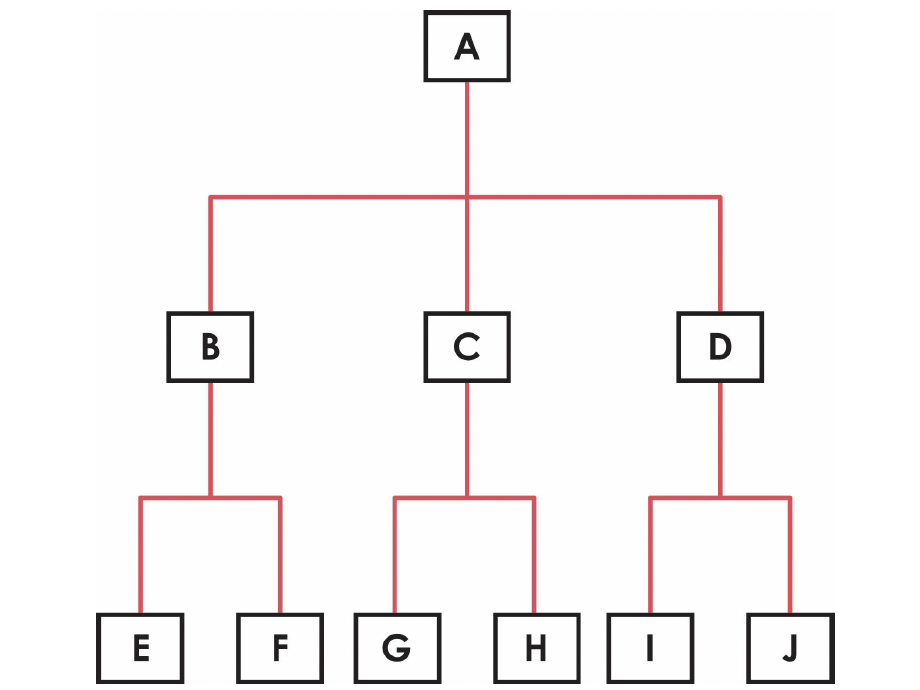
Create guardrails when needed – and remember it's better not to guardrail at all. Guardrails are meant to help someone who can by-and-large do their job, it's intended to help people perform better, not save someone that's failing. People can't always see their blindspots, proactively guardrail if needed.
Keep your strategic vision the same while making appropriate tactical changes as circumstances dictate. How an organization looks can change drastically, but the strategic goals should remain the same. Reinforce the reasons for them, ensure the values and goals are imbued in the population as a whole. Don't sacrifice long for short-term, balance big picture and fine detail.
Have good controls so that you are not exposed to the dishonesty of others. If given the choice, most people will take more for themselves, than be fair to you. Be transparent, enforce rules, encourage honesty, and the consequences are known for violating rules.
Have the clearest possible reporting lines and delineations of responsibility. Dual reporting causes confusion and should be avoided, unless everyone is aware and agrees. Create leverage in your process, achieve more with less. Equip great people with great technology to maximize their potential.
Remember that almost everything will take more time and cost more money than you expect. Virtually nothing goes according to plan because no one plans for the things that go wrong. Assume things will take more time and cost more than originally thought.

14 Do What You Set Out to Do
The organization, like the individual, has to push through to results in order to succeed.
Work for goals that you and your organization are excited about and think about how your tasks connect to those goals. If you're focused on the goal, excited about it, and recognize the work to be done, you'll have the right perspective and be motivated. Motivate others by what drives them, think before doing, and look for creative solutions.
Recognize that everyone has too much to do. Other than working harder for longer, you can: 1) have fewer things to do by prioritizing and saying no, 2) find the right people to delegate to, and 3) improve your productivity. Creativity, character, wisdom, and avoiding frustration, all help.
Use checklists. Crossing items off a checklist serves as a task reminder and shows progress.
Allow time for rest and renovation. Don't burnout. Build downtime into your schedule to make time for all of the other stuff that needs to get done.
Ring the bell. When you've successfully pushed through to achieve your goals, celebrate!
15 Use Tools and Protocols to Shape How Work Is Done
Words alone aren't enough. Change won't happen until proper habits are developed.
Having systemized principles embedded in tools is especially valuable for an idea meritocracy. An idea meritocracy operates on agreed-upon principles. To produce real change, there needs to be internalized or habitual learning. Collect data to produce conclusions and actions. Use principles that foster an environment of confidence.
16 And for Heaven's Sake, Don't Overlook Governance!
It's the process that checks and balances power to assure the principles and interests of the community are placed above the individual.
To be successful, all organizations must have checks and balances. By checks, people that hold others accountable, by balances, the balance of power. No one should be more powerful than the system or irreplaceable. An organization's structure should be clear and provide paths of communication and reporting.
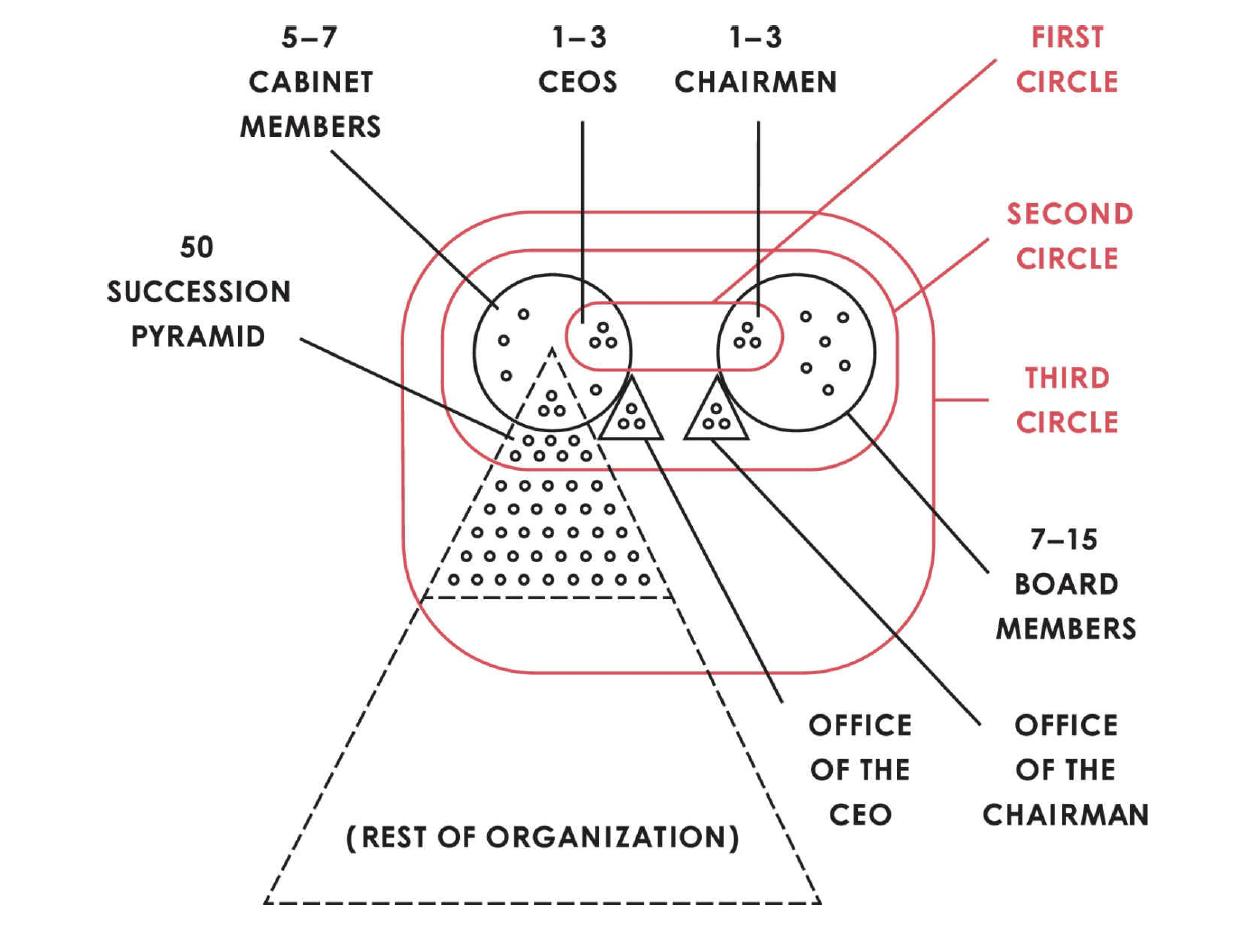
Remember that in an idea meritocracy a single CEO is not as good as a great group of leaders. A group reduces dependancy on a single person, increases expertise, establishes adequate checks and balances, and shares the burden of the work in a more manageable way.
No governance system of principles, rules, and check and balances can substitute for a great partnership. Have people who always operate for the good of the community based on agreed-upon principles. Individual power and ego needs to take the backseat to creating close, cooperative, and effective working relationships characterized by thoughtful disagreement and commitment to whatever the idea-meritocratic process decides.
🧠 Final Thoughts
If life truly is 10% of what happens to you, and 90% of how you react to it, then Principles gives us the blueprint of success for the 90%.
I view Principles as a modern business or success bible, in a sense. It's full of valuable lessons that apply in a variety of situations to help us navigate our increasingly crazy world. It provides us with tools that we can use to make better decisions, have more positive outcomes, and get more value from ordinary interactions.
If nothing else, I believe everyone could benefit from reading the Life section, as they'll be the most relatable regardless of what you do for a living. But if you work in management, as part of a team, or you feel like you could be doing a little bit more than you are right now, Work provides key insights into what made Bridgewater become the largest Hedge Fund in the world.
My total word count for this article is a little over 5% of the word count of the book. If there was anything that caught your attention in here, I can't recommend the book enough. I really had to cut out so much.
❤️ Liked This? Check These Out
Principles for Dealing with the Changing World Order by Ray Dalio, why nations succeed and fail
A Random Walk Down Wall Street by Burton G. Malkiel, the time-tested strategy for successful investing
The Almanack of Naval Ravikant by Eric Jorgenson, a guide to wealth and happiness
All ideas, quotes, and illustrations are borrowed or based on Principles by Ray Dalio. To learn more, visit www.principles.com.


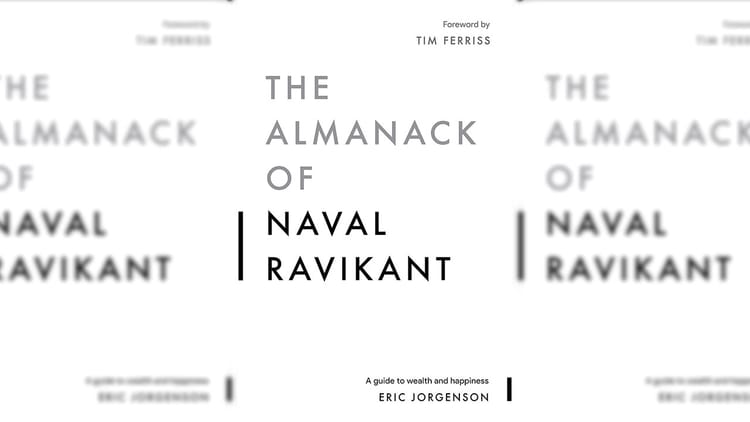



Member discussion